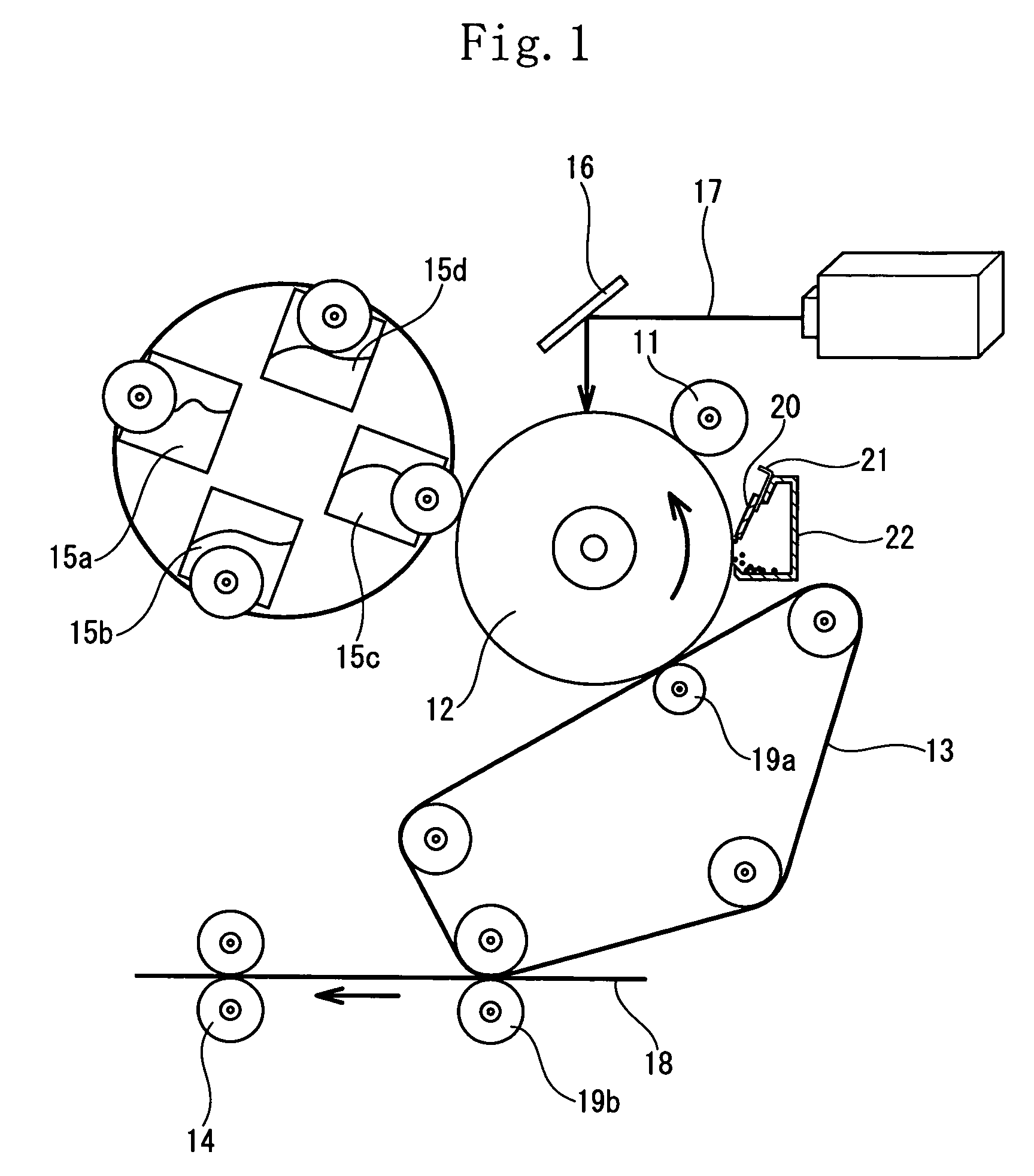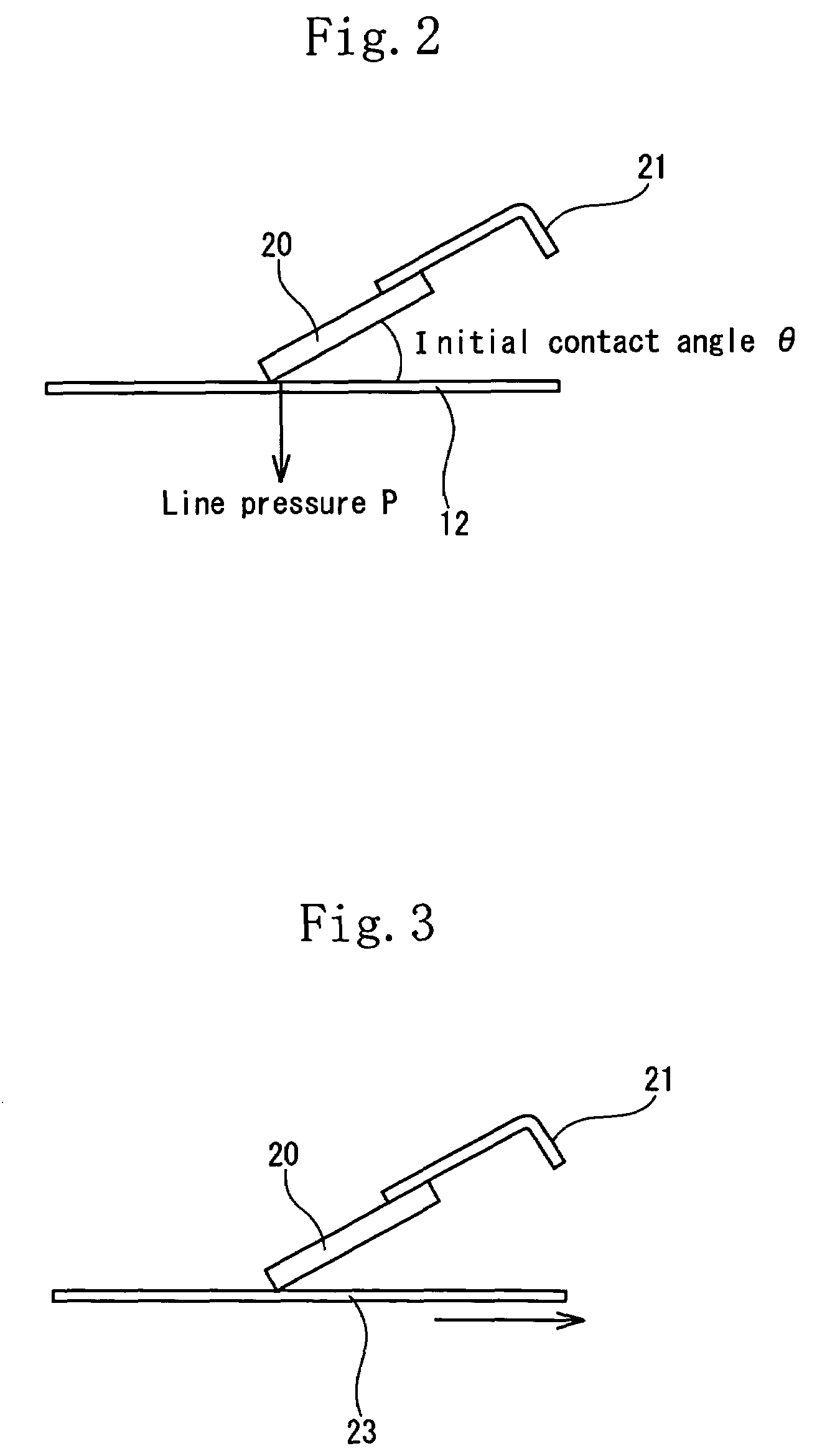Cleaning blade for use in image-forming apparatus
a technology of cleaning blade and image forming apparatus, which is applied in the direction of electrographic process, optics, instruments, etc., can solve the problems of excessive wear of the cleaning blade edge, noise-making phenomenon, and difficulty in removing small-diameter spherical polymerized toner that has remained on the surface of the photoreceptor, so as to achieve effective restraint of the cleaning blade and improve the cleaning performance. , the effect of large line pressur
- Summary
- Abstract
- Description
- Claims
- Application Information
AI Technical Summary
Benefits of technology
Problems solved by technology
Method used
Image
Examples
examples
[0136]Examples of the present invention and comparison examples are described below.
examples 1 through 4
and Comparison Examples 1 Through 4
[0137]After the mixing amount of each of the rubber component (1) and the filler (2) shown in table 1 was measured, the rubber component (1) and the filler (2a, 2b) were supplied to a rubber kneading apparatus such as a twin screw extruder, an open roll or a Banbury mixer. Thereafter they were kneaded for five to six minutes while they were being heated to 80° C. to 120° C.
[0138]The obtained mixture and the crosslinking agent (3) were supplied to the rubber kneading apparatus such as the open roll, the Banbury mixer or the kneader. The mixing amount of the crosslinking agent (3) is shown in table 1. Thereafter they were kneaded for five to six minutes while they were being heated to 80° C. to 90° C.
[0139]After the obtained rubber composition was set in a die, it was press-vulcanized at 160° C. to 170° C. for 20 to 40 minutes to obtain a sheet having a thickness of 2 mm.
[0140]After a cleaning blade having a width of 27 mm and a length of 320 mm was ...
PUM
| Property | Measurement | Unit |
|---|---|---|
| contact angle | aaaaa | aaaaa |
| contact angle | aaaaa | aaaaa |
| contact angle | aaaaa | aaaaa |
Abstract
Description
Claims
Application Information
 Login to View More
Login to View More - R&D
- Intellectual Property
- Life Sciences
- Materials
- Tech Scout
- Unparalleled Data Quality
- Higher Quality Content
- 60% Fewer Hallucinations
Browse by: Latest US Patents, China's latest patents, Technical Efficacy Thesaurus, Application Domain, Technology Topic, Popular Technical Reports.
© 2025 PatSnap. All rights reserved.Legal|Privacy policy|Modern Slavery Act Transparency Statement|Sitemap|About US| Contact US: help@patsnap.com



